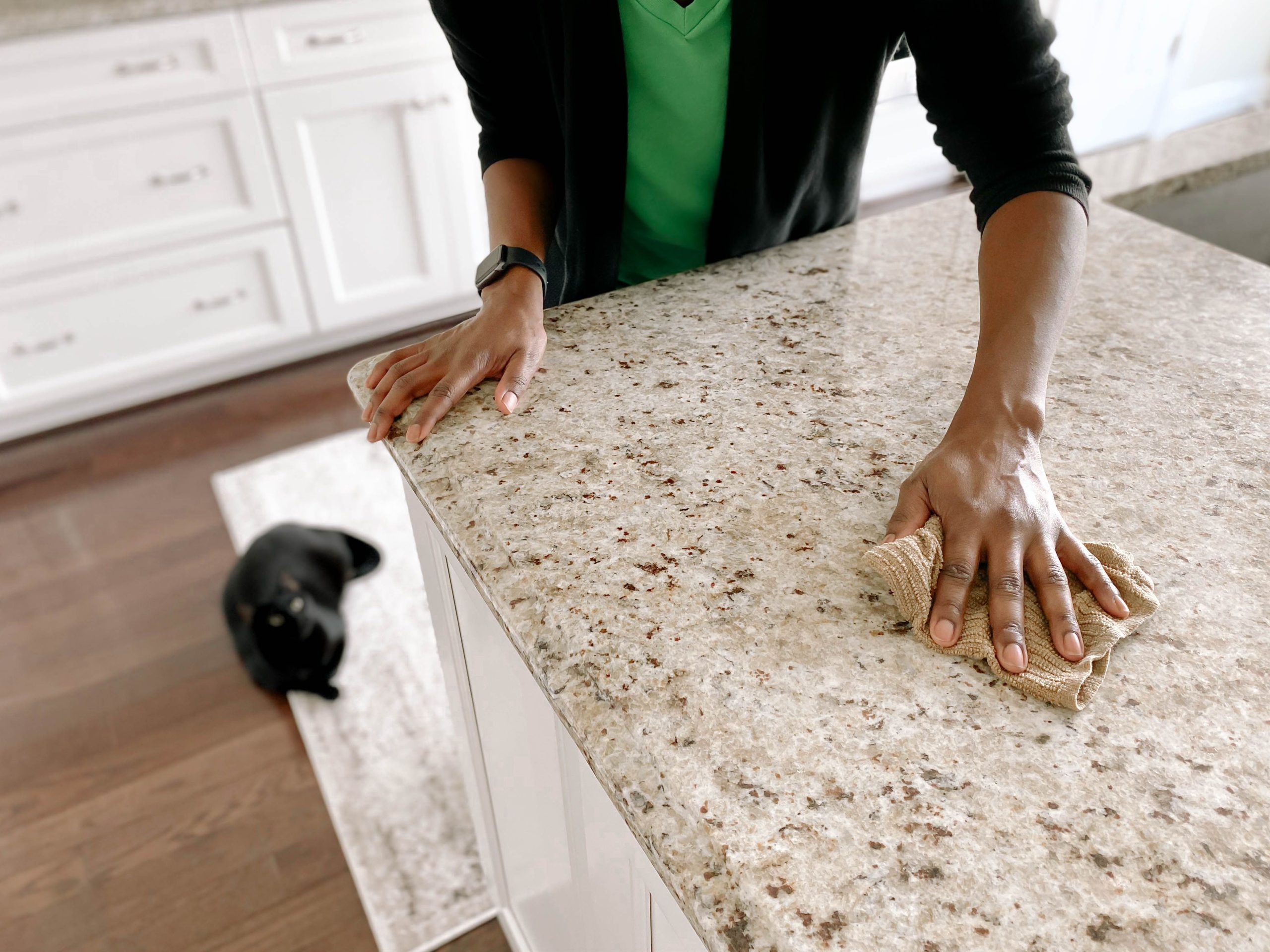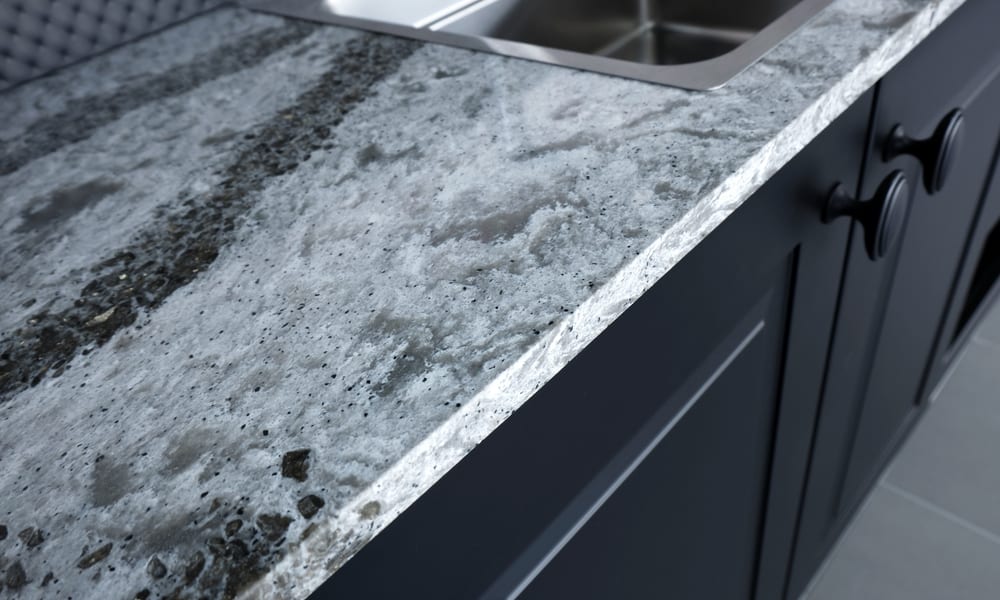Refinishing kitchen countertops is a great way to update the look of your kitchen without committing to a full remodel. This project is relatively inexpensive and can be done in a weekend with the right supplies and techniques. With the right preparation and tools, you can refinish your kitchen countertop and achieve a beautiful, professional-looking finish. In this guide, you will find an overview of the process, the supplies you need, and a step-by-step guide on how to refinish kitchen countertops.
Preparing to Refinish Kitchen Countertops
Refinishing kitchen countertops is a great way to give your kitchen a much-needed facelift, but there are a few things to consider before you get started. Preparing to refinish your countertops involves assessing the condition of the countertops, selecting the right materials for the job, and getting the necessary tools and supplies.
Before you begin, inspect the countertop closely and make sure it is free of any cracks, chips, or other damage. If any of these issues are present, it is a good idea to have the countertop professionally repaired before refinishing.
Next, you will need to select the best materials for the job. Countertop refinishing kits are available in different colors and finishes. Select a kit that will match your kitchen’s decor and look. Be sure to check the kit for all of the necessary supplies, such as sandpaper, primer, and top coat.
Once you have gathered the supplies you need, you can start the refinishing process. Begin by cleaning the countertop with a mild detergent and water. Then, sand the countertop with medium-grit sandpaper and use a vacuum to remove the dust. Apply the primer and let it dry completely. Then, apply the top coat and finish the countertop.
Refinishing a kitchen countertop may seem like a daunting task, but with the right materials and preparation, it can be done quickly and easily. By taking the time to assess the condition of the countertop, select the right materials, and gather the necessary supplies, you can give your kitchen a new look without spending a fortune.
Selecting the Right Refinishing Materials
When it comes to refinishing kitchen countertops, the materials you use are just as important as the techniques you employ. With the right materials, you can achieve a professional-looking finish that can last for years. But with the wrong materials, you can end up with a countertop that looks subpar and wears down quickly.
When selecting materials for refinishing, start by looking for products specifically designed for countertops. These products are formulated to provide a glossy, durable finish that stands up to heat, moisture, and everyday wear and tear. Look for refinishing kits that contain everything you need, such as a cleaner, a stripper, a sealant, and a topcoat.
You should also consider the type of finish you want. For a more traditional look, opt for a glossy topcoat. If you prefer a more natural look, look for a matte finish. You can also consider options such as metallic finishes for a more unique look.
Finally, be sure to read the instructions carefully and follow all safety precautions. Proper ventilation is key, as refinishing products can contain hazardous chemicals.
By taking the time to choose the right materials for refinishing your kitchen countertop, you can create a beautiful, long-lasting finish.
Cleaning and Sanding the Countertops
Refinishing your kitchen countertops is a great way to give them a brand-new look. Before you start, it’s important to properly clean and sand the countertops to ensure the new finish adheres properly. Cleaning and sanding the countertops is the first step in the refinishing process.
Start by wiping down the countertops with a cloth and a quality household cleaner, such as diluted vinegar or a non-abrasive cleaner. This will help remove any dirt, dust, grease, and other debris from the surface. Once the surface is clean, lightly sand the countertops with sandpaper or a power sander. This will help remove any existing sealant, wax, or other finishes from the countertops, as well as smooth out any imperfections. Make sure to use the appropriate grit of sandpaper for the type of countertop you’re refinishing.
Once the countertops are clean and sanded, use a damp cloth to wipe away any dust or debris. Make sure to give the countertops ample time to dry before applying the new finish. By taking the time to properly clean and sand the countertops, you can ensure that the new finish will adhere properly and last for years to come.

Applying Primer to the Countertops
Refinishing kitchen countertops can be a great way to give your kitchen a fresh look and feel. Applying primer to the countertops is an important step to ensure an even and long-lasting finish. Properly preparing the countertops before painting is key to a successful refinishing job. Primer helps provide a strong bond between the paint and the countertop surface, so it’s important to get it right. To apply primer to countertops, you should start by cleaning the surface and lightly sanding it to remove any residue. Once the countertops are clean, you can apply a thin coat of primer, making sure to cover every inch of the surface. Allow the primer to dry completely before applying a topcoat of paint. Applying primer to your countertops is a crucial part of painting them, so be sure to take your time and do it correctly for the best results.
Applying the Finish to the Countertops
Refinishing kitchen countertops is an easy and cost-effective way to upgrade the look of your kitchen. Once you have prepared the surface of your countertop, the next step is to apply the finish. Depending on your countertop material, you may need to use a specific type of finish, such as varnish or polyurethane. When selecting the finish for your countertops, you should consider how the finish will impact the look and feel of the countertops. Specifically, consider the sheen level of the finish, as this could affect the visual effect of the countertops. Additionally, the finish should be durable enough to withstand hot pans and other kitchen utensils. There are a few methods for applying the finish to countertops. The most common method is to use a brush and roller and simply brush the finish onto the countertop. For countertops with an intricate pattern, you may need to use a paint sprayer. Regardless of the application method, it is important to ensure that the finish is applied equally and consistently. Finally, you should allow the finish to fully dry before using the countertops.
Sealing the Countertops
Sealing your kitchen countertops is the last step in the refinishing process and is one of the most important. Sealants act as a protective layer that keeps your countertops looking their best and help them last longer. When selecting a sealant, make sure to choose one that is food-safe and designed for the surface you are sealing. For example, a sealant designed for granite countertops may not be suitable for laminate surfaces. It is also important to follow the manufacturer’s instructions for application to ensure the sealant is properly applied. Once sealed, regular maintenance such as wiping the countertops down with a damp cloth and using a mild detergent can help keep them looking their best.
Finishing Up
Finishing up a kitchen countertop refinishing project is an important step in the process. It is essential to ensure the surface is properly sealed and protected. After all, you want the countertop to look great for years to come! The best way to finish a countertop is with a few coats of polyurethane sealer. This will provide a long-lasting, protective barrier against spills and heat damage. Additionally, you may opt to use a stone sealer or a water-based sealer for added protection. After the sealer has dried, a final coat of wax or polish can be applied to give the countertop a shiny, finished look. With the right tools and supplies, refinishing kitchen countertops can be a relatively easy DIY project, and it can give your kitchen a fresh, updated look.
Troubleshooting Common Refinishing Issues
Are you planning to refinish your kitchen countertops and feeling a bit overwhelmed? Refinishing countertops can be a daunting task, but with the right tools and a bit of patience, it can be done. This article will guide you through troubleshooting common refinishing issues and provide you with tips and techniques for achieving a flawless finish.
Before starting your refinishing project, it’s important to understand the materials involved. Different countertop materials may require different types of finishes, and it’s important to select the right one for the job. Once you have the right materials and tools, you’ll be ready to tackle any refinishing issue that comes your way.
One of the most common refinishing issues is bubbles or blisters. These are caused when the finish isn’t properly applied or the surface isn’t properly prepared. To avoid bubbles, make sure the countertop is clean and free of any grease, dirt, or debris. Be sure to use a consistent, even coat of finish and avoid over-brushing.
Another common issue is drips or runs. These can occur when too much finish is applied or when the finish isn’t properly mixed. To avoid drips and runs, make sure the finish is properly mixed and apply just enough to cover the surface. Also, be sure to use a brush specifically designed for the surface you are refinishing.
Finally, peeling and chipping are other common issues. This can occur when the finish isn’t applied in an even manner or when the surface isn’t properly prepped. To avoid peeling and chipping, make sure the finish is applied in an even manner and that the surface is clean and free of any grease or debris.
Refinishing kitchen countertops can be a challenging task, but with the right tools and techniques, you can achieve a flawless finish. Be sure to pay attention to the materials and techniques you use and don’t be afraid to troubleshoot any issues that come up. With some patience and practice, you’ll be able to refinish your countertops like a pro.
Conclusion
Refinishing kitchen countertops is an excellent way to upgrade your kitchen without the expense of a major renovation. With the right supplies and a little bit of hard work, you can transform your countertops into a beautiful and durable surface. Whether you choose to paint, stain, or seal your countertops, you’ll be sure to enjoy the upgraded look for years to come.


